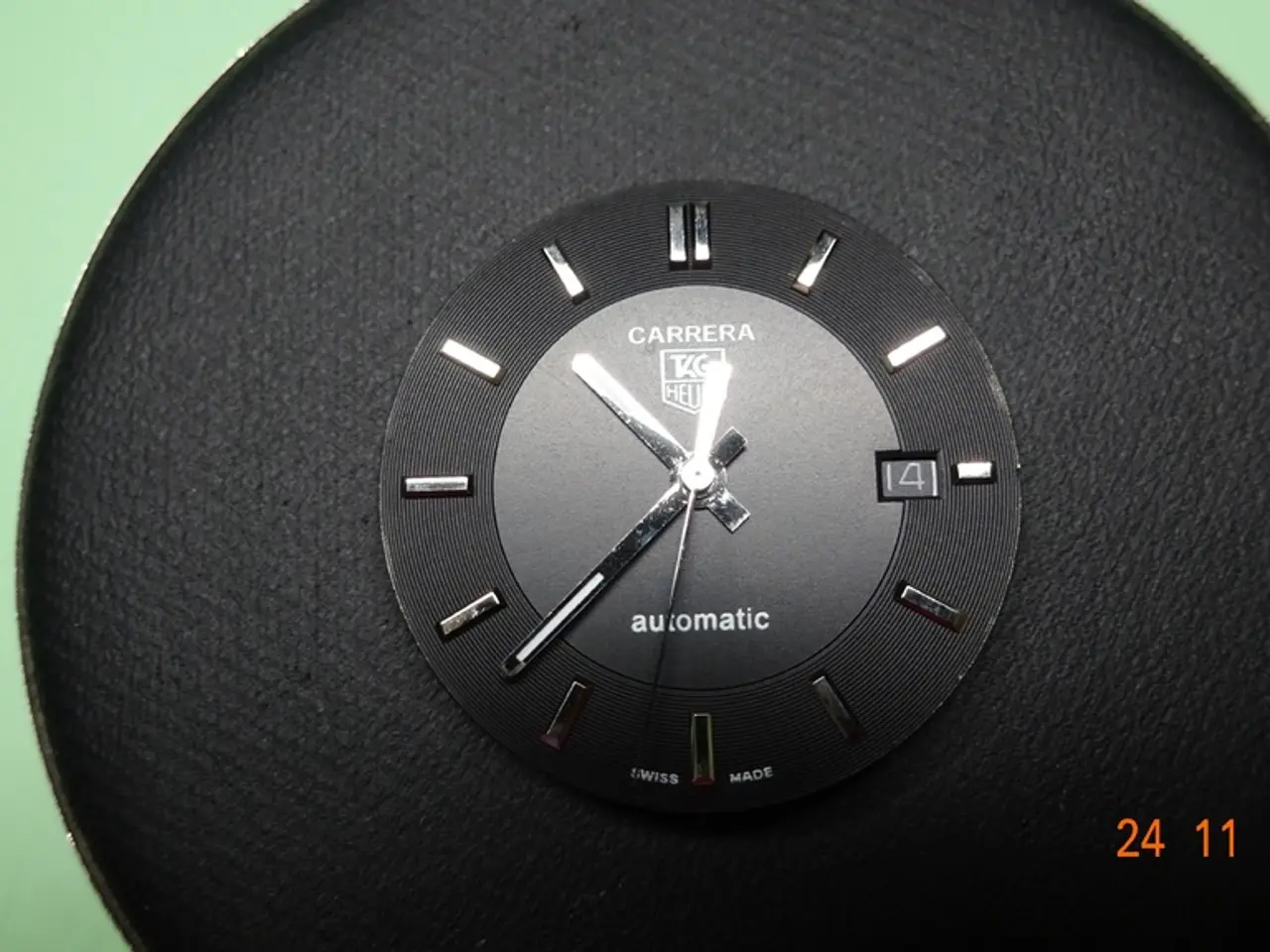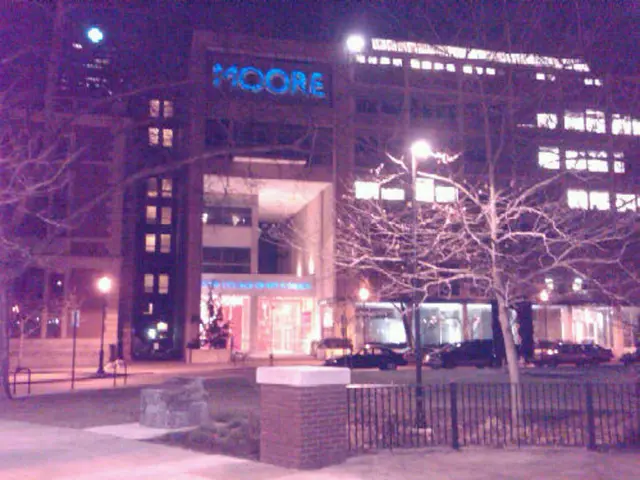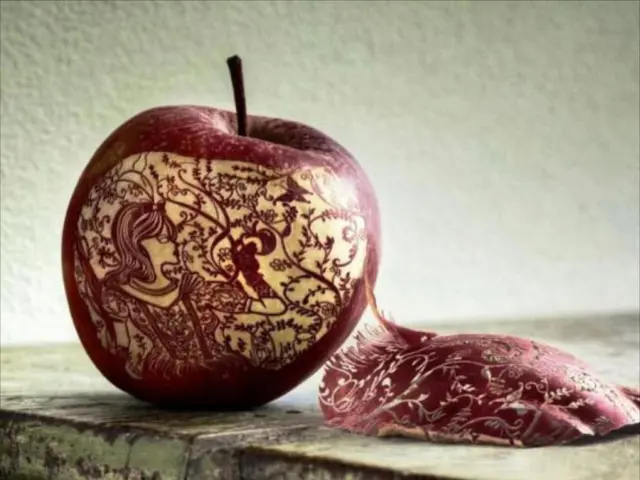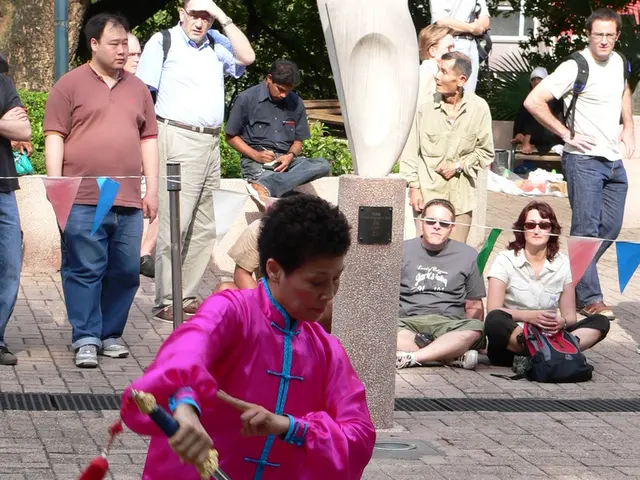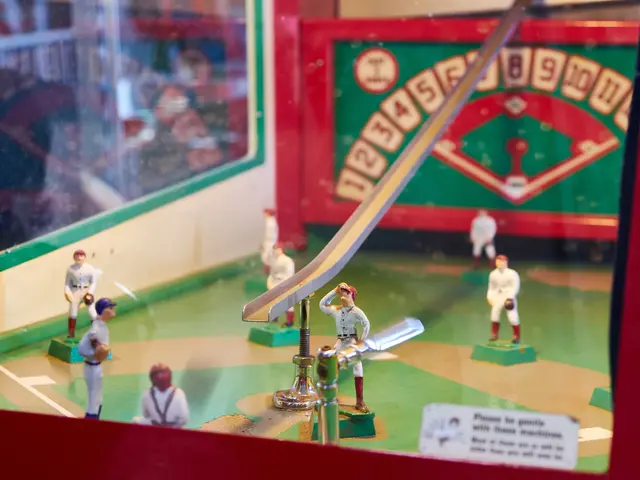Interpreting the mechanical jargon: What does "bushing a clock" actually denote?
In the intricate world of mechanical clocks, one essential repair technique stands out—bushing. This process is crucial in restoring a worn-out clock movement to its former glory.
What is Bushing?
Bushing a mechanical clock involves installing small metal sleeves (bushings) into the enlarged or worn brass pivot holes. This repair is necessary because worn pivot holes cause increased friction and improper wheel mesh, which can make the clock run slow or stop entirely.
The Bushing Process
The worn pivot hole is first carefully reamed or drilled out to a precise size. A bushing, typically made of brass or another suitable metal, is then inserted into the hole to restore its original diameter. The bushing is trimmed flush with the clock plate and then polished or reamed internally to provide a smooth bearing surface for the pivot. A small drop of approved clock oil is applied to the bushing hole to ensure proper lubrication and reduce wear.
Tools for Bushing
A pivot hole reamer or drill is used to clean and size the worn hole accurately. A bushing tool or bushing installation tool is used to press or fit the bushing snugly into the hole. A bushing cutter is used to trim the bushing flush, and a burnisher or polishing tool is used to smooth the inside of the bushing and refine the bearing surface. Fine files, needle files, and pivot-polishing tools are used for final adjustments.
The Importance of Bushing
Bushing allows the steel pivots to turn freely with proper oil lubrication, preventing further wear and ensuring accurate clock operation. It is a common clockmaker procedure to revive worn movements. Ideally, most clocks should undergo servicing every three to five years, and bushing is an integral part of this process.
Identifying the Need for Bushing
Intermittent stopping or complete failure of a clock might be due to pivot wear. Pivot holes can become oval-shaped due to wear, which can cause the gear to move away from the pinion and eventually stop when the gears no longer mesh properly.
Preventative Maintenance
Regular servicing of mechanical clock movements is essential to ensure proper functioning and extend the lifespan of the clock. Proper cleaning of a clock movement is vital to prevent excessive oiling, which can lead to pivot wear.
In conclusion, understanding and addressing pivot wear through bushing is a crucial step in maintaining the accuracy and longevity of mechanical clocks. This repair technique, when performed correctly, not only extends the life of a clock movement but also ensures that a clock runs reliably for years.
[1]: Reference for the common practice of bushing in clock repair [5]: Reference for the importance of regular servicing in extending the lifespan of clocks
- To preserve the functionality and longevity of valuable vintage clocks, frequent home-and-garden maintenance should involve the technology-driven technique of clock repair, such as bushing to address pivot wear.
- Incorporating the home-and-garden lifestyle of owning and maintaining vintage clocks often involves a deep understanding of clock repair techniques like bushing for optimal performance and a seamless integration into contemporary living spaces.
